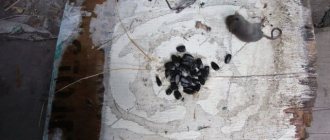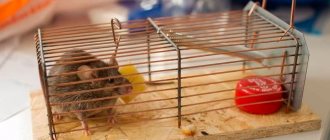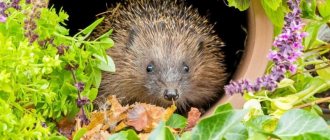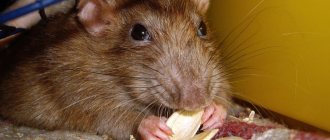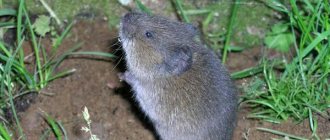There are so many things summer residents have to fight for the quality of their harvest! But no matter what measures are taken, there is someone nearby who just dreams of nibbling carrots or potatoes in the pantry, ruining the flowers in the flowerbed, or doing some other damage. In general, mice do not sleep.
Trying to fight these rodents, summer residents use any means - using strategic thinking, setting up different types of mousetraps and generously scattering poison in the corners.
To some, these methods of getting rid of the mouse “army” will seem inhumane. In addition, pets or children can be harmed by mousetraps and toxic substances. And this should not be allowed under any circumstances. Therefore, you can try a relatively peaceful way to drive mice away from your area - with the help of plants. Some types of plants can be used to prepare poisoned bait, and some can scare away uninvited tailed lovers of other people's crops with their smell or the presence of thorns.
And what kind of plants are these?
Daffodils
More precisely, not the flowers themselves, but their dug up bulbs. To protect plantings of root crops (potatoes, carrots) from mice, in the summer they dig up daffodil bulbs and distribute them over the entire area of the beds, mixed with coriander stems, and then cover them with mulch.
Daffodils are able to protect against mice and their bulbous “colleagues in the flowerbed” - tulips. Mice are always ready to taste their bulbs. To protect these flowers, daffodil bulbs of low-growing species are planted around the tulip bed in the fall.
Basic ways to repel rats
Almost any pungent odor repels rats, since rodents’ sense of smell is better developed than other receptors. In addition to unpleasant aromas, you can influence rodents using sounds. Parasites do not like sharp and loud bangs or impacts. Nowadays you can buy devices that produce sounds that humans cannot hear.
20 most effective remedies for rats and mice
Smells
Knowing what smell rats don’t like, you can use it to influence the animals. This method is one of the safest and most humane. At the same time, most products with the necessary aroma can always be found at hand. The main thing is to know how to use rat “aromatherapy” correctly.
Peppermint
Peppermint is one of the main odors that mice and rats cannot tolerate. You can use mint extract, solution, oil or greens. The grass should be placed near mouse holes and areas where rodents have been seen. You can rub the floors with oil or solution.
Ledum
Another time-tested folk remedy is wild rosemary. The plant intoxicates rats and mice, so rodents try to avoid the grass. Ledum is suitable for use in the house, country house, and garage. The plant is poisonous, so you need to work with it with caution.
Elder
Hydrocyanic acid is a toxic substance that has a detrimental effect on rodents. It is contained in elderberry. Therefore, experienced gardeners often plant shrubs near fruit trees and other plantings. It is also effective to place elderberries near outbuildings. Use at home must be done with caution so that other animals and children do not have access to the plant.
Chamomile
The pleasant aroma of chamomile is unbearable for rats. Therefore, rodents try to immediately leave the home where there is the smell of a flower. Chamomile is used dry and fresh. It is safe for households and other animals. The product can be easily purchased at a pharmacy.
Sagebrush
Wormwood will help preserve the harvest from rodents and scare away rats from the premises. Mice cannot stand the bitter aroma of the grass. Therefore, animals try not to be near the source of the aroma. Wormwood is used in fresh and dried form. Can be placed at home and in utility rooms.
Mint
Mint or lemon balm will help protect not only the supply of vegetables in the basement, but also the food stored in the cupboards at home. The grass is placed in bags and laid out in the required places. The aroma of mint has no negative effects on humans, but is unpleasant to mice. Rodents leave the area saturated with the smell of grass.
Tansy
The pungent smell of tansy is unbearable for rats and mice. Parasites cannot tolerate tart aroma. Therefore, with the help of several inflorescences you can quickly and permanently repel rodents. To prevent the appearance of uninvited guests, it is recommended to periodically replace tansy with fresh specimens and place them in places where rodents have been spotted.
Pyrethrum
Pyrethrum is safe for humans. The aroma of the plant is well tolerated by other animals, but is unpleasant to rats. Pyrethrum foliage, stems and flowers are used. They must be placed in rodent habitats.
Blackroot
Black root has been used by people for a long time to repel rats and mice. Fresh plant juice, dry rhizomes or a decoction of them are used to bait rodents. The plant is added to bait, and after eating it, the rat dies. Dried and fresh grass simply repel pests. At the same time, the aroma of black root is not felt by humans. You can put it in the trunk of your car, at home, or in the garage.
It is recommended to place blackroot seeds and stems in the attic, pantry or under the floor. It is necessary to place several branches of the plant in haystacks to prevent rodents from making a nest there.
Essential oils
Essential oils have a high effect. They have a high concentration of odor, so the aroma remains in the air for a long time. To repel rats, you can use essential oils of mint, tea tree, tansy and wormwood.
It is recommended to soak a cotton swab in oil and place it near rodent habitats. If a rat gets dirty in oil, it will die. This effect of the product can also be used in pest control.
Ultrasound
An effective way to repel mice is to use ultrasonic devices. Electronic repellers emit ultrasonic waves that rodents cannot tolerate. Advantages of repellers:
- safety;
- efficiency.
Flaws:
- high cost of devices;
- limited capabilities of the device if there is a large amount of furniture in the room.
Among the most popular and effective models are:
- "ElectroCat Turbo" - the effective impact area is about 400 square meters. m. A domestically produced device that costs 2,000–2,500 rubles rids a room of rodents in a matter of hours.
- “Pest Riddex” is an imported decorative device designed for an area of 200 square meters. m. The cost of the device is 1,600–2,000 rubles.
After turning off the device from the network, there is a possibility of rodents returning to the room.
Additional methods
You can scare away rats with harsher substances. Among the folk remedies you can find turpentine, kerosene, cologne, ashes from the skins of killed rats, etc. All substances are toxic and have a pungent odor. Therefore, the use of most products in an apartment or residential building is impossible.
Kerosene
It is recommended to spray the habitats of parasites with kerosene. In basements and attics it makes sense to install a container with liquid. The smell of fuel will emanate constantly. Therefore, rodents will try not to return to their habitual place. If the animal gets into the liquid, it will die.
Naphthalene
Naphthalene has a sharp, specific odor. The solid substance not only repels rodents, but is also toxic to them. It is recommended to mix naphthalene with sawdust and scatter the mixture in mouse habitats. Such flooring will cause animals to panic and try to leave the room. It is recommended to use mothballs to remove rodents from non-residential premises.
Turpentine
Turpentine has a similar effect to kerosene. The liquid has a pungent odor that causes discomfort to living beings. It is recommended to coat the corners of the room with turpentine, or place a container with it next to mouse holes. The aroma of fuel persists for a long time and does not dissipate well, so rodents do not appear for a long time.
Burnt fluff
Burnt feathers are another effective method of repelling parasites. Pests cannot tolerate the smell of burnt fluff and avoid its locations. You can burn any feathers. Duck down has the most unpleasant aroma. Ashes must be mixed with starch and scattered in places where rodents have been seen.
Burnt rat fur
It is believed that rats are acutely aware of danger. Therefore, people have been using the method of repelling rodents for many years, which involves the use of the corpses of their relatives. Killed rodents must be skinned and burned. After this, the singed wool becomes the most terrible rat repeller.
Burnt rubber
The smell of burning rubber causes fear in pests. You need to place a piece of rubber in a bucket, pour gasoline or lighter fluid on it and set it on fire. Burnt pieces should be placed in areas where rodents live. The container in which the firing was carried out also emits an unpleasant odor for a long time and can be used to repel.
Cologne
Cheap cologne, which you can buy at a department store, is an effective mouse repellent. The perfume has a sharp and persistent odor. Sensing the aroma, rodents try to retreat. It is recommended to use cologne not only in outbuildings, but also in apartments.
Chlorine solution
Bleach and chlorine-containing substances not only repel rats, but also kill them. Experienced housewives place jars of whiteness around the house. They prevent rats from leaving their holes. If the liquid enters the body, the animal dies.
Jars with chlorine solution must be covered with a plastic or metal lid, after making several holes in it.
Glass wool
Glass wool does not emit an odor, so it is used in residential areas. Insulation is added to food baits, which must be placed near mouse holes. Once in the body, glass wool injures the rodent's stomach. This causes instant death of the animal from internal bleeding.
Glass wool can be added to the soil mixture and sprinkled over the paths along which mice move.
Light
Animals lead a hidden lifestyle. They go out in search of food mainly at night, when there are no extraneous noises or light sources. Therefore, it is logical to assume that abruptly turning on the light can scare away rodents and force them to hide in holes.
Light is not suitable as a permanent means of getting rid of rats. Pests quickly adapt to unexpected outbreaks and continue to move around the room in search of food.
Plant baits
If mice do not want to leave your area in an amicable way, it is time to move on to a more severe means of control - baits.
The plants from which baits are made are very poisonous. Don't forget about safety precautions.
Here are some bait recipes:
- grind crow's eye rhizome (5 g) and sunflower seeds (100 g);
- prepare powder from tubers of aconite antidote (50 g) and mix it with 1 kg of cereal or flour;
- prepare an infusion of Lobel's hellebore rhizomes. This remedy for getting rid of mice is prepared as follows: 100 g of rhizomes are kept in 200 ml of water for 4-5 days, adding a little hydrochloric acid to the decoction. Then grain is poured into the finished infusion and waited until it swells;
- Grind the castor bean seeds and mix them with unrefined vegetable oil.
Baits are placed in places accessible to mice. Rodents will happily eat foods diluted with poison (flour, cereal, sunflower seeds, grain), and after such a treat you are unlikely to see uninvited tailed guests on your site.
All means are good in the fight against mice. However, many summer residents want to solve this problem in a civilized way. For example, drive away mice with plants.
Do you have your own proven means of combating these rodents? Share in the comments!
Elderberry against mice
There are two types of elderberry most common in Russia: black and red. They differ in the color of ripe fruits. The black variety is a well-known medicinal plant, but is not used as a rodent repellent.
Red elderberry has large racemose fruits. They are usually very numerous, and because of this the shrub is valued as an ornamental plant. In the metropolis, red elderberry is easiest to find in gardens and park areas, and outside the city - in ravines, on the edges of forests.
This is a large shrub, very noticeable during the period of fruit ripening. Elderberry leaves are complex, consisting of 5 large elongated parts on a common petiole. The smell of crushed green parts is quite unpleasant even for humans. Branches break easily. The berries are bright red, small, have the same unpleasant odor and are completely inedible.
Rodent-repellent “bouquets” can be made from leaves alone, or using stems and berries. In the latter case, the result can be a very decorative composition. Bunches of grass, which rats and mice are afraid of, can be placed in a vegetable storage area in the country, or placed in the far corner of a kitchen cabinet or table. Even beekeepers often use plant branches to protect bee colonies and honeycombs from mice.
A useful shrub can be planted near the house by sowing elderberry seeds or digging up a small bush in the forest. There are decorative forms of the plant with carved leaves. They retain all their beneficial properties, but can be used as a decoration for a personal plot.
The plant must be handled with care. Mice are repelled not only by the unpleasant smell, but also by the poisonous properties of elderberry. It contains large amounts of hydrocyanic acid, which is found in the fruits, bark, leaves and roots. If there are small children in the house, then you should not bring bright, attractive berries into the room.
How to determine the presence of mice in the house
There are a number of signs of the presence of “uninvited guests” in the room:
- Rustling and grinding, extraneous sounds, mainly at night.
- The appearance of small holes, holes near the baseboards and in the walls.
- Chewed furniture, wallpaper, shredded pieces of paper (from which rodents make their nests).
- The presence of droppings on the floor with a specific odor.
- Musty room.
- A clear reaction from a cat that will react to mice moving around the house.
If the home owner notices such changes, then rodent control should begin immediately.
Mouse droppings
How marigolds act on insects
Repellent plants with their aroma repel or confuse pests that feed on vegetable crops. Experienced gardeners have long noticed that there are no insects eating the crop in the beds next to the tagetis. By planting marigolds around the perimeter of the garden or in the rows, you can prevent the attack of various pests:
- Colorado potato beetle;
- mole crickets;
- aphids;
- onion fly;
- cabbage whites;
- weevils.
Nightshade pests, in particular the Colorado potato beetle, cannot tolerate the smell of tagethis. It is recommended to plant flowers in greenhouses where tomatoes, eggplants, and peppers grow. It is enough to place them at the entrance, and if there is space, then around the entire perimeter. Mixed plantings of cabbage, onions and marigolds are common. In such beds you rarely see white butterflies, weevils or cutworms. Secretive proboscis beetles and root mites try to stay away from onions if the scent of tagetis is nearby.
Advice. Plant low-growing varieties of marigolds between the rows: “Orangeflamme”, “Carmen”, “Queen Sofia”. They will not shade vegetables.
Aphids are a real disaster for cucumbers growing in open ground. Colonies of small parasites suck the juice from the leaves and damage the flowers and ovary. Their invasion is accompanied by ants. If you plant rejected marigolds near the beds, you can forget about this problem. Pests sense the characteristic aroma of the plant at a great distance and try not to get close to its source.
Weed control
There is no small benefit for the garden from planting marigolds in reducing the number of weeds. Flowers become unpleasant neighbors for creeping wheatgrass, horsetail, and purslane. The fact is that flower roots contain thiophene. This aromatic compound inhibits some plants. This property of tagetis allows you to reduce the time required for weeding.
Advice. You should not plant marigolds next to legumes (peas, beans). Substances released by flowers have a negative effect on them.
The proximity of tagetis in a flowerbed with other flowers is not only an attractive decorative composition. In the place where marigolds grow or were previously planted, roses and lilies suffer less. Tall gladioli and phlox will bloom well and please the eye next to the low-growing tagetis.
Soil disinfection
Marigolds help get rid of pests in the air and in the soil. They disinfect against fungi and repel nematodes. The roots of the plant produce a chemical that contributes to the death of small worms living in the soil. The effect of the compound extends over a radius of 50 cm. It also affects wireworms and click beetle larvae. Root nematodes, parasitizing potatoes, onions, and strawberries, cause significant damage to the crop. Chemicals effectively control pests, but have a negative effect on vegetables. Tagetis is a natural remedy that controls the appearance of nematodes.
Marigold phytoncides destroy fungal infections that cause fusarium in plants. To disinfect the soil, Tagetis is planted in the garden, and after flowering it is buried in the ground. In a month, this place is ready for planting new crops: corn, barley and others. Another application option is autumn mulching. In October-November, after frosts, marigold bushes are pulled out of the ground, but not placed in a general compost heap. They are cut by hand or crushed with a garden shredder, and then scattered throughout the garden. The mulch remains on the surface or is covered with a small layer of soil, without digging.
Information. Thin-leaved marigolds are the least effective against insects. For growing in the garden, it is recommended to use erect (African) and deviated (French) marigolds.

